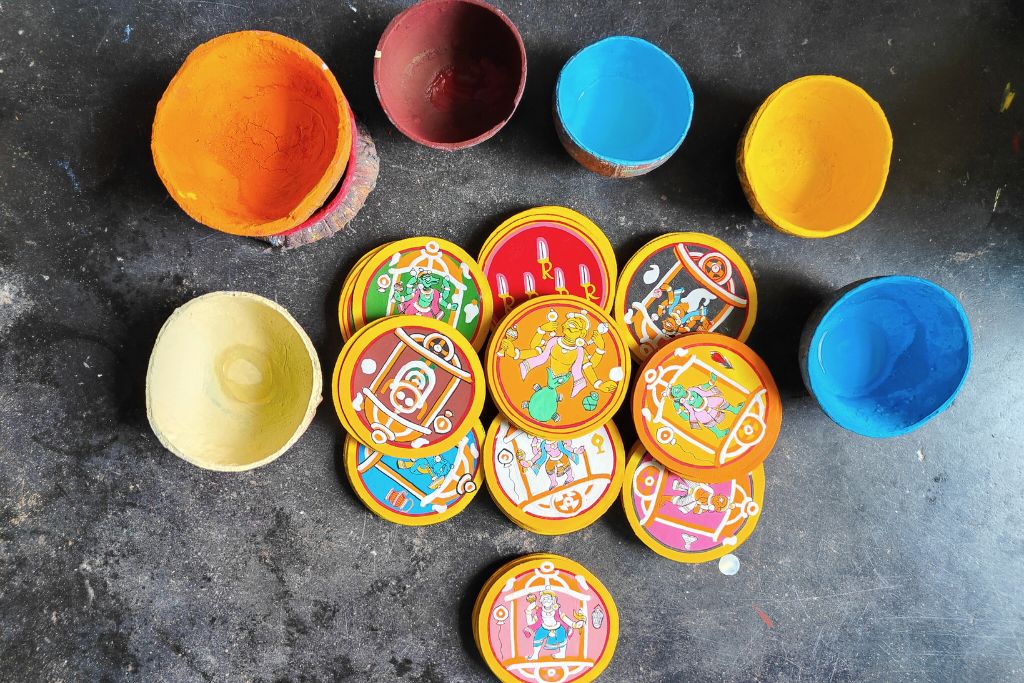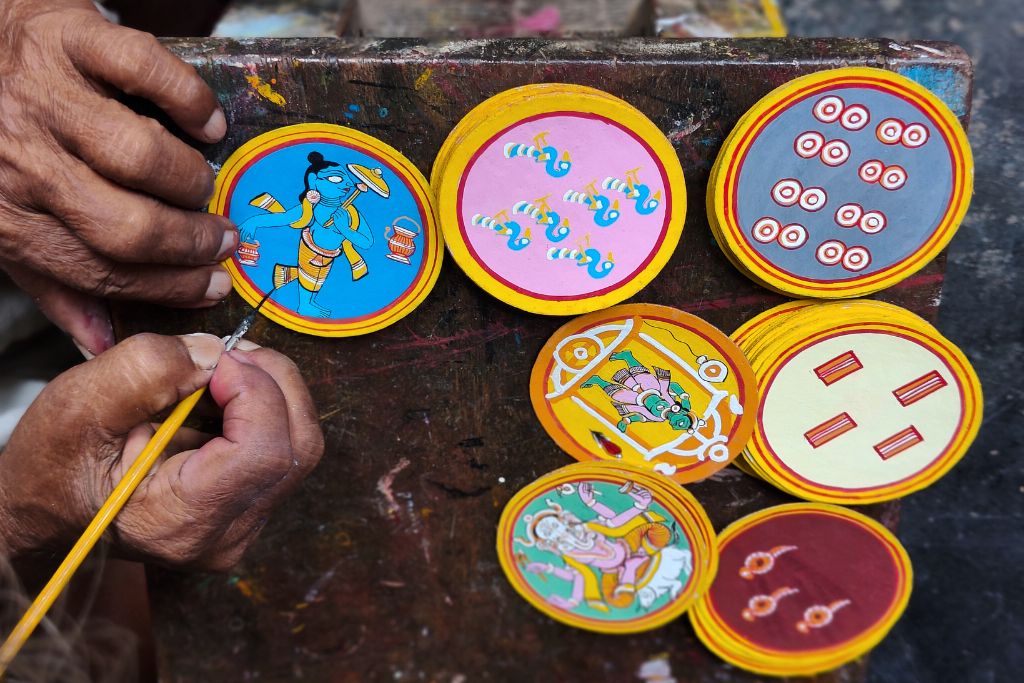
This colourful card game from Odisha is art
Ganjapa, a traditional card game of Odisha, introduced by the Persians in the 16th century, features hand-painted circular cards depicting Hindu deities. Its popularity has dwindled, but art lovers appreciate the cards as decorative items.
Ganjapa is a traditional card game that gained popularity in the 16th century. Introduced by the Persians, it was primarily a recreational game played exclusively by male members of society. Odisha is known for having the largest community of Ganjapa players and manufacturers.
The unique aspect of this game is the hand-painted cards. The circular-shaped cards feature pattachitra motifs and patterns, mostly depicting figurative representations of Hindu deities, dancers, and references from Hindu mythology. The most popular theme is ‘dashavatar,’ showcasing the ten primary avatars of Vishnu.
Pattachitra artists are still popularly involved in painting these cards, although the number of artists practising this craft has dwindled. One notable artist is Banamali Mohapatra who received a National Award in 1981 and the Shilpi Guru award in 2014.
The process of making these cards resembles Pattachitra paintings. Tamarind seeds are used as glue, which is applied to a cloth attached to a sturdy base. The cloth is then dried, and circular-shaped sheets are carved out. Cards are created by joining two circular sheets. Natural dyes, such as harital for yellow, sea shell for white, and lamp soot for black, are used for painting. The colours are preserved in dried coconut shells and mixed with water each time the painter needs to paint.
A typical pack consists of 96 cards divided into eight suits of twelve. Each pack contains 14 cards – 12 numbered, one king and one mantri. Ganjapa is played in various ways, such as “Charirangi” (cards of 4 colours), “Atharangi” (cards of 8 colours), “Dasarangi” (cards of 10 colours), “Bararangi” (cards of 12 colours), “Chaudarangi” (cards of 14 colours) and “Sohalarangi” (cards of 16 colours).
Over time, however, the game’s popularity has gradually waned, and now only a limited number of villagers play the card game. It has failed to attract new generations of players and is mostly enjoyed by the older generation in certain villages of Puri, Ganjam and Gajapati districts of Odisha.
The game has lost its appeal among the newer generations, which has consequently impacted the production of these cards, posing a threat to the art form.
Nevertheless, art lovers from around the world still order these cards, not for gaming purposes, but as decorative items to adorn their walls and homes.
All photos and text by Aishwarya Mohanty
Aishwarya Mohanty is an independent journalist based in Odisha. She reports on the intersection of gender, social justice, rural issues and the environment. She is also a Rural Media Fellow powered by Youth Hub.







